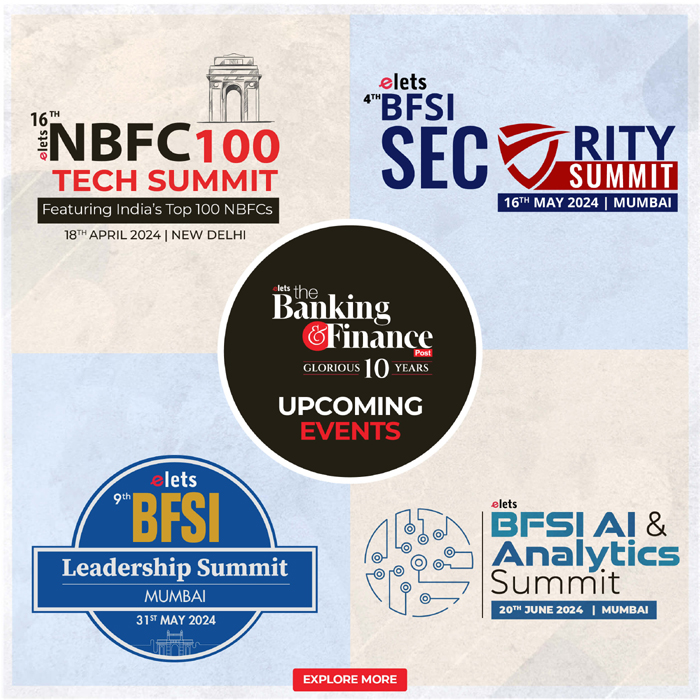
With Business Payments and Expense Management becoming a key area to control and optimise, banks are entering into strategic partnerships with new age FinTech startups to provide powerful spend management solutions to Indian Corporates, thus winning back the loyalty of long-standing customers and attracting new clients, says Anshul Rai, CEO and Co-Founder, Happay, in an interview with Elets News Network (ENN).
Why is there a rise in the demand for business payments and spend management solutions in India? How is this demand impacting the dynamics between Banks and Fintech companies?
For the longest time, the choice of payment options available to businesses was limited to cash, paper cheques and current accounts. Businesses were managing and tracking expenses manually using paper, spreadsheets or homegrown systems – not surprisingly, this process involved extensive data entry, was prone to cash leakage, human errors, poor policy compliance, and payment delays. Employees would waste hours creating expense reports, manually and wait endlessly to get them reimbursed. Management had no real control or visibility into how their money was being spent. Accountants spent days reconciling stacks of paper receipts and spreadsheets.
Things changed for the better as banks introduced digital means such as corporate cards and online/mobile banking and FinTechs provided automated expense management software for tracking and reconciling expenses. However, there was one thing still missing. These systems operated in silos; there was no integration between the two. Corporates were still in the dark about the status of their spends and cash flows, due to lack of real-time data integration.
As business travel costs began to rise and expense management became more complex and cumbersome by the day, corporates actively started looking for integrated solutions that firstly, combined the convenience of corporate cards with powerful control and tracking features of softwares and secondly, integrated with their existing Enterprise systems.
This was a key turning point that changed the dynamics of the game. Banks and Fintechs no longer view each other as adversaries eating into each other’s market share but as partners that could serve a bigger market together- by providing an end-to-end payment and spend management solution.
In this era of collaboration that you referred to, what are the strengths that both the parties (Banks and FinTechs like you) bring to the table? How do they leverage each other’s strengths?
The digital landscape in India is changing at lightning speed.
Transaction banking is being commoditised with platforms like New India Stack (or Aadhaar stack), IMPS and UPI. Loyalty is no longer restricted to what bank account one has. Banks have been quick to accept that their current commercial offerings are not enough to help retain the large base of customers that they have invested years to build. Relationship building, though a strong moat, may not be enough to hold the fort in the long run.
Times are changing quickly and banks are seeing this as an opportunity to collaborate with Fintechs who have agile operating models, a larger appetite for risk, are free of bureaucracy. This new outlook towards collaboration is enabling banks to offer highly differentiated customer experiences focused on speed, personalisation, relevance, and seamless delivery in B2B payments and spend management.
Forward-looking banks are leveraging the growing dynamism of the FinTech ecosystem to spur innovation at a faster pace.
Fintechs like us, on the other hand, have the technology and innovation prowess that can automate and digitise spend management for businesses but we struggle with scale and new customer acquisition. This is where we capitalise on the large distribution network of banks and the trust they have built with corporates over the decades.
Banks have the distribution infrastructure and market penetration which cannot be built by new companies in a short time. Combined together, banks have access to over 40 million businesses, most of which cannot be reached out through digital mediums. In conclusion, banks help us gain visibility, take products to market quickly, achieve economies of scale, earn customer trust and ensure market penetration at a faster pace.
The B2B payments industry has received enormous growth lately. How is Happay different from all the other similar kind of platforms available in the market?
Happay’s card issuing and card hosting/management platform help partner banks to quickly issue, generate, host and process corporate cards independently without the need for any other third party. Our key offering for banks – the Issuing Stack that consists of Happay’s own transaction switch, online card management module, real-time card controls, card processing, card authentication, settlement and dispute resolution. This stack directly links to the payment networks like Visa or MasterCard.
Banks can use this product to build competitive corporate card programs of their own and launch with quickest go-to-market time. On top of this product sits a sophisticated and unified UI/UX that serves as the front-end of the solution. It helps the end users from the enterprise issue new cards, set limits on cards, turn on-turn off cards, monitor and track card spends, track, schedule and process payments, view and download MIS reports, etc.
What are the parameters banks consider for partnering with FinTech players like you?
While banks are open to collaboration they are also looking for a certain level of readiness on the part of the Fintechs they are partnering with. Banks will look at how compliant the Fintech is. Since the RBI holds the bank responsible for compliance, the bank, in turn, takes the onus of conducting rigorous audits to make sure we meet all the compliance requirements. In our case, we go through 5-6 such bank audits in a year. Banks also try to mitigate the risk as much as possible. In our case, banks need assurance of Zero Monetary risk, Zero KYC Data risk and Zero Security risk. Banks also make sure that we have all the necessary certifications in place.
For example, is the partner Visa and Mastercard certified? Is the partner PCI-DSS compliant? We meet all these requirements. Last but not least, the bank will also review how smooth and seamless the backend processes that power the product are. In our case, the process encompasses card order and card delivery to card activation and user onboarding. With compliances and certifications already in place and backend processes running seamlessly at Happay, all Banks need to do to come on board as partners is to sign the agreement.
What are the parameters that you consider to find the right banking partner?
We look for 2 types of partnerships. The first is with banks that see our product as a natural extension of their services. Banks combine their corporate card program with the Happay platform to create a more value-added offering for their current customers.
With Happay’s integration, banks can provide customers with real-time payments data and strong pre-spend controls over business payments – such as a real-time view of bank balances, real-time feed of corporate card transactions, real-time activation and deactivation of corporate cards, real-time limits on card spends, real-time corporate spend and cash flow analytics, real-time recon, etc.
These digital capabilities help banks create additional stickiness with existing corporate customers and also helps banks attract prospective ones who are looking for sophisticated payment technology – thus, leading to an increase in both reach and revenues.
Banks don’t have to reinvent the wheel as they are able to take successful Fintech models and apply them to their customers and their environment. The second type of partnership is with banks that help us bring new products to market.
We currently offer corporate cards to businesses and partner with banks to take new products to market – this helps us cater to the new and diverse payment and spend management needs of our Enterprise clients. Happay currently has 5000+ business customers across 40+ verticals. Happay is used by businesses of all sizes from startups (<100 users) and small businesses (100-500 users) to medium enterprises (500-5000 users) and large enterprises (5000+ users). Our payment platform currently processes over INR 4000 CR worth of transactions annually. >
Tell us about your partnership/tie-up with HDFC Bank.
In collaboration with HDFC bank, we have introduced a new card-linked Travel and expense management solution to enable Indian corporates to efficiently manage their business travel spends.
Elets The Banking and Finance Post Magazine has carved out a niche for itself in the crowded market with exclusive & unique content. Get in-depth insights on trend-setting innovations & transformation in the BFSI sector. Best offers for Print + Digital issues! Subscribe here➔ www.eletsonline.com/subscription/














